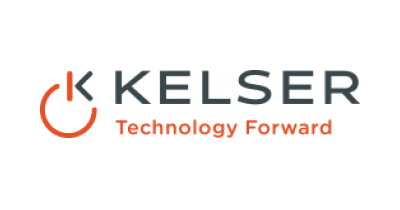How A TAM Optimizes Your Technology To Reduce Downtime And Fuel Growth
Many businesses are turning to fully managed IT services to help them get a handle on rapidly changing technologies, increased security requirements, and comprehensive IT planning and budgeting.
When you have an employee who can’t open an important file or a workstation that won’t connect to the server, for instance, you can call the help desk to fix the problem. If the problem is escalated, the MSP has skilled engineers who can help resolve the issues.
But what about other IT issues that go beyond break/fix? How close to their end-of-life expectancy are your desktops, laptops, servers, and other devices? When will your software licenses renew? How do you weigh and prioritize your long-term technology needs against budget considerations?
At the nexus where your technology meets your strategic business goals is where a technical alignment manager (TAM) comes in.
In this article, we’ll explain how a TAM can not only help ensure the overall security, functionality, and efficiency of your IT infrastructure, but also make recommendations to help you avoid major headaches down the road.
After reading this article, you will understand how TAMs leverage their IT expertise and business knowledge to help give your business a competitive advantage and drive future growth.
What Does A TAM Do?
A technical alignment manager is known as different names, depending on the MSP, including technical account manager and customer support engineer.
In a nutshell, a TAM is an experienced IT professional who serves as the designated point person and subject matter expert for your entire IT landscape.
The person in this position learns the ins and outs of your IT systems in minute detail to be able to quickly identify and correct irregularities or gaps.
Communication is at the heart of a successful partnership between a TAM and a client. Besides their technical know-how, a TAM relies on their people skills to establish and maintain an honest, open line of communication between the MSP and client eliminate confusion or conflict.
The TAM must also know how to skillfully translate complex technical jargon to business leadership in a way they can understand.
TAM Role Within Managed IT Services
A TAM is a multi-faceted position that plays a critical role in fostering a strong partnership between the MSP and client.
By having a detailed, working knowledge of your IT infrastructure, your TAM can quickly identify problems that come up and work to find the best solutions.
At Kelser, TAM support is offered as part of our fully managed IT services.
Key Responsibilities Of A TAM
- Serve as a strategic technical resource connecting the MSP and your business
- Establish a rapport with leadership within your organization through frequent communication and regular site visits (usually monthly)
- Compile a complete inventory of your company’s IT environment (on prem, digital, and remote)
- Identify any problems or gaps to offer recommendations (at Kelser, this is in consultation with our vCIO—an additional resource provided with our fully managed IT)
- Determine how your employees use technology within your business, including how they access devices, files, programs, applications, and systems on your network
- Conduct ongoing inventory and device end-of-life assessments with each site visit
- Create step-by-step instructions for end-user processes, such as how an employee connects to a particular server (this information should be readily available to you, us, and the help desk to simplify the remediation process if a problem recurs)
- Document certain IT performance results, such as virus scans
- Participate in quarterly business reviews (QBR) to ensure that we’re on the same page and staying on top of any existing or newly identified issues
- Make strategic technology and budgetary recommendations (working with the vCIO) to align with your business goals
How TAMs Drive IT Efficiency in Managed Services
No two companies are exactly alike. So, a TAM offers customized support for your business.
A TAM is responsible for learning everything there is to know about your IT infrastructure, such as the physical layout of your space, the exact quantities and types of devices you have, the number of end users connecting to your network, and the types of software and apps you're using.
By acquiring extensive knowledge about your IT systems, along with making regular site visits, your TAM will be able to readily identify glitches or potential problems that need to be resolved.
Doing so will allow them to accurately advise you on needed IT investments, such as implementing new software or replacing computers and other equipment at or past their end-of-life dates, to ensure that you're keeping up with ever-changing regulatory and cybersecurity requirements.
It will also help ensure that automatic software patches, new desktop purchases, planned system migrations, company expansions, or any other changes to your technology are done in a coordinated manner as seamlessly as possible to minimize downtime.
Since a TAM needs to know everything about your IT environment, they must also develop a thorough understanding of your business and the industry you compete in.
Your TAM will be able to draw on this information to know what apps, programs, systems, and equipment are being used in your industry and best practices. This will allow them to offer informed recommendations and guidance about IT solutions that are tailored to fit your business needs.
By gaining an intimate knowledge of your IT, a TAM will ensure that your business IT systems are running smoothly, efficiently, and securely to help boost your business edge in the marketplace and capitalize on new opportunities.
The Bottom Line On Working With A TAM
After reading this article, you now have a more thorough understanding of how a TAM helps bridge the gap between technology and the business side of the equation.
A TAM serves as a preventative resource to help you address your IT issues and develop a strategic plan for the future to avoid serious problems that could cost you significantly more time and money down the road.
At Kelser, TAM support is part of the deep bench of IT expertise we provide with our managed IT services. Want to learn more about the benefits of working with an MSP? Read 10 Reasons For SMBs To Hire A Managed IT Services Provider.
We realize, however, that managed IT doesn’t work for every business. If you’d like to learn whether you might benefit from working with an MSP, read here.
Check out this article to discover the true ROI of managed IT services.
Want to get an idea of how much managed IT services will cost your business? Use Kelser’s pricing calculator to get an immediate, no-obligation estimate.




